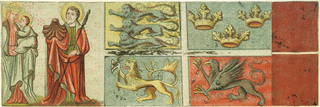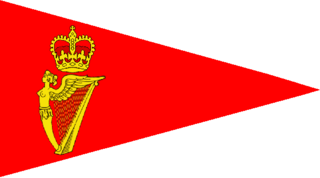 W
WA maritime flag is a flag designated for use on ships, boats, and other watercraft. Naval flags are considered important at sea and the rules and regulations for the flying of flags are strictly enforced. The flag flown is related to the country of registration: so much so that the word "flag" is often used symbolically as a synonym for "country of registration".
 W
WFlag of convenience (FOC) is a business practice whereby a ship's owners register a merchant ship in a ship register of a country other than that of the ship's owners, and the ship flies the civil ensign of that country, called the flag state. The term is often used pejoratively, and although common, the practice is sometimes regarded as contentious. Each merchant ship is required by international law to be registered in a registry created by a country, and a ship is subject to the laws of that country, which are used also if the ship is involved in a case under admiralty law. A ship's owners may elect to register a ship in a foreign country which enables it to avoid the regulations of the owners' country which may, for example, have stricter safety standards. They may also select a jurisdiction to reduce operating costs, avoiding higher taxes in the owners' country and bypassing laws that protect the wages and working conditions of mariners. The term "flag of convenience" has been used since the 1950s. A registry which does not have a nationality or residency requirement for ship registration is often described as an open registry. Panama, for example, offers the advantages of easier registration and the ability to employ cheaper foreign labour. Furthermore, the foreign owners pay no income taxes.
 W
WA burgee is a distinguishing flag, regardless of its shape, of a recreational boating organization. In most cases, they have the shape of a pennant.
 W
WCode letters or ship's call sign were a method of identifying ships before the introduction of modern navigation aids and today also. Later, with the introduction of radio, code letters were also used as radio call signs.
 W
WDressing overall consists of stringing international maritime signal flags on a ship from stemhead to masthead, from masthead to masthead and then down to the taffrail. It is a sign of celebration, and is done for occasions, anniversaries, and events, whether national, local or personal.
 W
WThe purported flag of Blackbeard, consisting of a horned skeleton using a spear to pierce a bleeding heart, is typically attributed to the pirate Edward Teach, better known as Blackbeard. However, contrary to popular belief, there is no accurate description of any specific flag used by Blackbeard during his piracy beyond using black flags or "bloody flags" and, in any case, the "flag of Blackbeard" appears to be an early 20th-century design.
 W
WThe gin pennant is a maritime flag. When flown aboard ship, it indicates an open invitation to other ships' officers to come aboard for drinks.
 W
WInternational maritime signal flags are various flags used to communicate with ships. The principal system of flags and associated codes is the International Code of Signals. Various navies have flag systems with additional flags and codes, and other flags are used in special uses, or have historical significance.
 W
WA jack is a flag flown from a short jackstaff at the bow (front) of a vessel, while the ensign is flown on the stern (rear). Jacks on bowsprits or foremasts appeared in the 17th century. A country may have different jacks for different purposes, especially when the naval jack is forbidden to other vessels. The United Kingdom has an official civil jack; the Netherlands has several unofficial ones. In some countries, ships of other government institutions may fly the naval jack, e.g. the ships of the United States Coast Guard and the National Oceanic and Atmospheric Administration in the case of the US jack. Certain organs of the UK's government have their own departmental jacks. Commercial or pleasure craft may fly the flag of an administrative division or municipality at the bow. Merchant ships may fly a house flag. Yachts may fly a club burgee or officer's flag or the owner's private signal at the bow. Practice may be regulated by law, custom, or personal judgment.
 W
WJolly Roger is the traditional English name for the flags flown to identify a pirate ship about to attack, during the early 18th century.
 W
WThe Philippine coastwise emblem is a flag flown at main-mast of marine vessels engaged in coastwise trade in the Philippines. Coastwise trade in the country is defined as the transfer of either merchandise or passengers between two seaports in the Philippines.
 W
WThe Jolly Roger is a symbol that has been used by submarines, primarily those of the Royal Navy Submarine Service and its predecessors. The practice came about during World War I: remembering comments by First Sea Lord Admiral Sir Arthur Wilson, who complained that submarines were "underhanded, unfair, and damned un-English" and that personnel should be hanged as pirates, Lieutenant Commander Max Horton began flying the flag after returning from successful patrols. Initially, Horton's submarine HMS E9 flew an additional flag after each successful patrol, but when there was no room for more, the practice was changed to a single large flag, onto which symbols indicating the submarine's achievements were sewn.
 W
WThe Z flag is one of the international maritime signal flags.